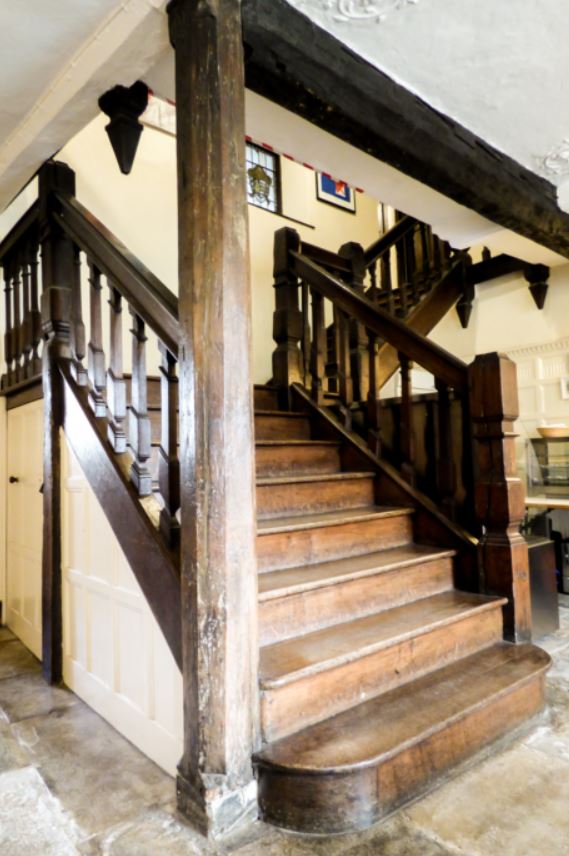History of SGGS
In 2018, Stratford Girls’ Grammar School and Sixth Form celebrated our Diamond Jubilee year. There was much to celebrate as we looked back over the 60 years of our school that is consistently recognised as one of the best state school educations in the country.
SGGS - history
The Early Years
It is fair to say that much of the accolade should go to two women who were, almost single-handedly, responsible for its foundation. Miss EB Williams, the Headmistress of the Hugh Clopton School for Girls, situated in Alcester Road, now known as Stratford School, and Alderman Mrs T Waldron, the Chair of Governors. They worked together with energy and zeal to convince Warwickshire Education Committee that the lack of academic opportunities for girls in Stratford was both unjust and divisive.
The first step was to improve the standard of education within the Hugh Clopton School. The two top streams were given the opportunity to prepare for public examinations. Gradually, Miss Williams appointed staff capable of teaching to GCE O-level, as it was then called. An embryonic sixth form was established, offering, at first, a limited number of A-level subjects.
The great breakthrough came with the purchase of The Manor at Shottery in 1958. It was originally used as an annexe to the main school: staff and pupils moved between the two buildings via Shottery Fields. Teaching took place in the spacious rooms of the house, an unusual and sumptuous venue. In due course the physical separation of the two upper streams from the rest of the school was set in train.
The original garden was a delight. A walled, double herbaceous border ran the length of the centre of the garden and trees had been planted to make the harmonious whole. When the bulldozers came in, the area, by necessity, was transformed into a building site. The administration, classroom and science blocks formed the outer perimeter and the Manor House remained the heart of the school. The conversion from private house and garden to the Stratford-upon-Avon Grammar School for Girls was skilfully done.
Some will remember the official opening of the school in June 1959. By then, we had been operating since September 1958 with a new first year of 60 pupils drawn from Stratford-upon-Avon for the first time. Miss Williams remained in post for eleven years until July 1969.
Miss Tudor is remembered with enormous fondness by our alumnae. She was, by all accounts, extremely strict but her focus was firmly on the outcomes of the students. Headteacher from 1969 until 1985, she is remembered vividly by the alumnae, who can easily retrospectively translate her disciplinarian outlook into an authentic dedication and care for her students and their outcomes. In the jubilee commemorative programme from 2008-9, she wrote that she remembered seeing a plan of the new buildings and garden and certain trees had been ringed in red, with a note explaining that they must be preserved. She was told that this was on the orders of Mr Yorke Lodge, The Warwickshire County Education Officer.
Miss Abrams was Headteacher for five years from 1985 until 1990, before Mr Stanbridge took over the reins from January 1991 until 2005, having been the Deputy Headteacher since 1987. His main objective was to empower the students and for them to take more responsibility for their own learning. He felt that the external examination results did not accurately reflect the ability of the students. He defined his priorities during his tenure as being the improvement of results across both GCSE and A-level, to increase student numbers, to improve facilities and accommodation and to raise the local and national profile of the school.
Results continue to improve
The enterprise culture flourished in the early nineties. Young Enterprise was introduced in 1987. A student council and sixth form consultative student body was established. Girls rapidly became more assertive and independent. Results improved and the school regularly featured high in national league tables. The sixth form expanded dramatically and the school became a three-form entry from Year 7. A new science laboratory and a drama studio were built and a well-equipped technology facility enabled the introduction of GCSE and A-level resistant materials technology. The Stratford Language Centre and the Stratford Music Centre were both added which further benefited all students and the community with state-of-the-art facilities. Additionally, the library was successfully refurbished and a full-time qualified librarian was appointed for the first time. All of this, despite a lack of funding and support from the Local Education Authority.
High Performing School Status
Collaboration with other community and academic institutions also flourished during this time. SGGS is a founder member of the Successful Selective State Girls’ Schools (aka the Magic Group) which comprises a number of high-achieving schools across the UK. Other highlights from this time include a lengthy uniform review, resulting long overdue changes, including scrapping the tie and the purple gabardine and introducing trousers. We also took on the catering contract from Warwickshire County Council which meant that quality, choice and value for money improved immediately in the dining room. Grounds services were tendered for, and we achieved specialist Language College status and forged links with our sister school in Japan. The success of the Language College since its establishment in 2002 led in 2007 to the award of High Performing School Status, and to us taking on Science College status from April 2007, too. In 2008 SGGS was awarded the Artsmark Silver Award in recognition of our excellent work in the Art, Drama and Music departments.
International School Award
Additionally, we achieved the full International School Award in 2007, which reflected the truly global focus of education in SGGS right across our curriculum. To the longstanding student exchange programme with Germany, we added exchange programmes with both France and Spain. We introduced Japanese into the curriculum and we began developing links with schools in both China and India. The programme of sports tours was extended from the well-established Year 9 and 10 Holland tour and Year 7 Ireland tour in the spring to an exciting South African tour in the summer of 2009. Curriculum visits were extended across the globe to include a Science visit to Paris, Politics and Economics visits to Brussels, History visits to Belfast and the places associated with the Third Reich, a Chamber Choir tour of Tuscany and a Theatre Studies visit to New York. At present, we still maintain an activities week in the summer term, known as Enrichment Week, with the Year 7 trip to Marle Hall and the History and Politics trip to Belgium both central to the programme.
SGGS: The Growing Family
Kate Barnett, Headteacher from 2005 until 2016, considers the human resources of SGGS to be its greatest strength; the friendly family atmosphere on which most visitors comment and which many alumnae remember. It was during her tenure that our biggest fundraising campaign was launched, ‘SGGS: The Growing Family’ which reached out to all members of our school community to raise funds to refurbish and extend our facilities as part of our ongoing improvement programme. It was a hugely successful initiative that enabled us to apply for grants and funding from the government to bridge the gap for the build. The Hargreaves building was opened in September 2016, offering a Fitness Suite, Sports Hall, dining facilities, Drama studio and History and Politics department. It wraps around part of the original school hall, enveloping the old with the new.
And so, we continue to grow. In size, in strength, in success, in outcomes and in overall achievements. As a state funded school, we continue to explore any and all opportunities that will assist us in maximising the experiences of our students. We are proud of each and every student who passes through the doors of SGGS, for we know that we contribute hugely and positively to shaping their futures, and that once you are a student at SGGS, you are forever a part of the family.
THE MANOR - HISTORY
Circa 794 an estate in Shottery together with Stratford and Bishopton was given to the Monastery of Worcester by Offa, King of Mercia. This link with the bishops of Worcester remained until 1918 when Shottery went into the Diocese of Coventry which had just been formed.
By 1086, Shottery was included in the Manor of Stratford and the area of Shottery was under seven hides.
Nothing of importance is known about the Manor until the time of King Edward III when in 1332 Robert de Stratford, Parson of Holy Trinity Church, was granted the whole right and title to all the lands of the Manor of Shotteriche.
By 1354 Robert de Stratford had become Bishop of Chichester and the founder of the Guild of the Holy Cross in Stratford. He passed the Manor on ot John de Bishopton and Isabel and their heirs.
In 1367, still in Edwards III's reign, John de Bishopton sold the Manor with all surrounding land (over 80 acres of meadow and 40 acres of pasture) to the Dean of Great St Martin’s, London and to Thomas Newenham.
In the reign of King Richard II, the land and Manor passed to Sir William Arundell, Knight, to hold and enjoy, but remained under the Crown.
John Harewell Esq. of Wootton Wawen was already in possession of Shottery Manor by 1402-1403, in the reign of King Henry IV. The main Harewell family, originally from Berkshire, lived in Wootton Wawen where they were Lords.
On 29 March 1402, John Harewell was granted a licence from John Clifford, Bishop of Worcester, to enable him to have Divine Services celebrate by a priest in the Oratory ‘within the Mannour House here at Shotrech’. This licence suggests a house of reasonably high status.
John Harewell died in 1428, but his descendants continued as Lords of the Manor as long as the male line lasted. Following the death of Thomas Harewell, the Manor was divided between sisters and co-heirs. The Manor remained in the family until at least 1746.
However, the house seems to have been leased at times. In the later 16th century, Shottery Manor was the home of Richard Woodward. His daughter, Susanna, married Richard Tyler, a friend of Shakespeare’s, against her father’s wishes and she was subsequently cut out of her grandfather’s Will as a result.
At the time of the 1670 Hearth Tax assessments, there is no mention of a Harewell family in either Stratford or Shottery. Within Shottery, most of the houses were assessed for a single hearth. Two properties, occupied by a Mr Barnard and a Mr Samuel Tyler, are assessed for five hearths, but the likely candidate for the Manor House is the home of Mr Richard Queeney, which was assessed for seven hearths, implying a house of distinction.
The house was evidently remodelled on several occasions and much of its present appearance is due to a campaign of work that probably took place in the later-17th century when cross-mullioned windows were added.
In 1776 the Manor and Lordship was sold to the Rt. Hon. Francis Seymour Conway, Viscount Beauchamp and Earl of Hertford (afterwards the first Marquis of Hertford of Ragley Hall, Alcester). He purchased two freehold estates in Shottery with tithes for £11,000. He was the chief land-holder at the enclosure in 1786. He died in 1794. Shottery Manor remained in the ownership of his descendants until 1870 when it passed to a cousin, Francis George Hugh Seymour, Fifth Marquis of Hertford, who died in 1884. The property then passed on to his son Hugh de Grey, Sixth Marquis of Hertford, who died in 1912.
It is possible that the Manor House and some of the land associated with it was sold off separately before that time. It had become a farmouse by the early 19th century. At the time of the 1861 census it was occupied by Thomas Canning (61), a farmer of 560 acres who lived with his wife Elizabeth (62), their son George (21), his eleven-year-old cousin Katie and a single house servant.
By the time of the 1871 census, Thomas and George were partners in the farm and it seems possible that the Manor House had been divided into two homes – one for Thomas and Elizabeth, with a boarder and a single servant which was actually listed as the Manor House. The other, listed as Shottery Cottage but the next property in the census taker’s list, for George, his wife Ellen and their rapidly increasing family. The couple had five children, the eldest just six years old, and they had a single live-in domestic.
Subsequently, in the 1881 census, George and Ellen are listed as being in the Manor House, and Thomas, by then 81 and listed as a maltster, and Elizabeth as living next door. Both Thomas and George had been involved in the setting up of the National School in the village in 1870 and had gifted some land to it. Their initials are in the brick noggin of the school’s first building, a re-sited timber-framed barn.
In 1901, the Manor Farm was occupied by William Hughes (43) and his wife, Edith and their eight children. There was just one female servant.
The trustees of the sixth Marquis sold the estate in September 1918 to the Flower family and shortly afterwards the whole estate became divided up and Shottery Manor House and grounds became the property of Archibald Dennis Flower Esq. of The Hill, Stratford-upon-Avon, on behalf of the trustees of the late Edgar Flower, of Stratford’s main employer, the Flower Brewery.
In 1938, the Manor became the residence of Lt. Col. Fordham Flower and Lady Flower and their four children. Fordham, who died in 1966 aged just 62, was described by the director Peter Hall as the ‘extraordinary maverick chairman’ in charge of the Shakespeare Memorial Theatre, and he backed Hall’s idea of creating a permanent theatre company in the town.
Lord and Lady Flower’s third child, Elizabeth Flower, visited the Manor on Thursday 13 July 2006, and shared many anecdotes about life in the Manor and its ghosts. The family lived in the Manor until 1950/51.
The property was then bought by Warwickshire County Council and at the encouragement of the Lady Mayoress of Stratford, Mrs Waldron, who believed in equal educational opportunities for girls, the property was opened in September 1958 as Stratford-upon-Avon Grammar School for Girls.
features of the manor still here today
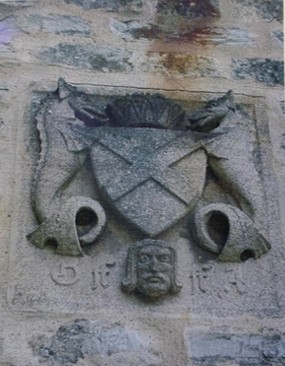
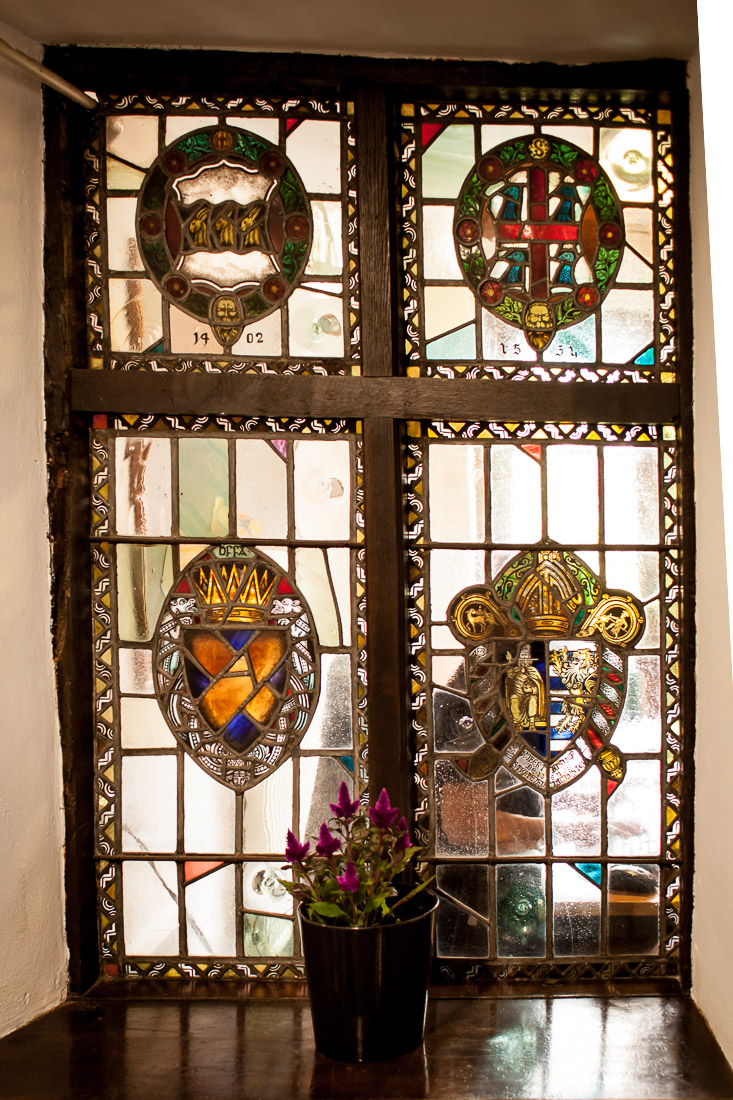
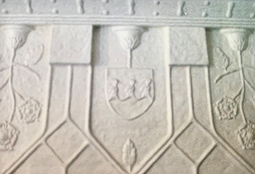

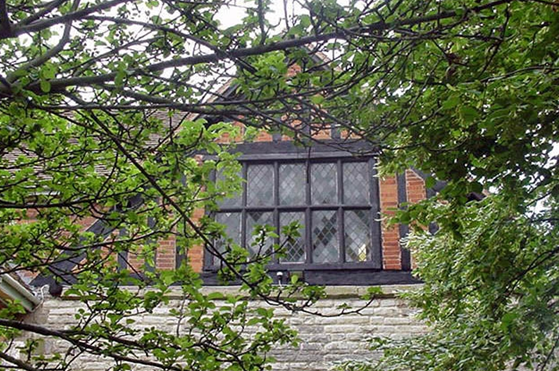
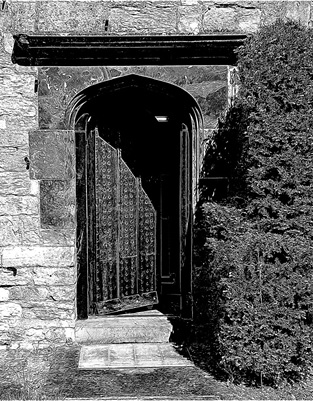
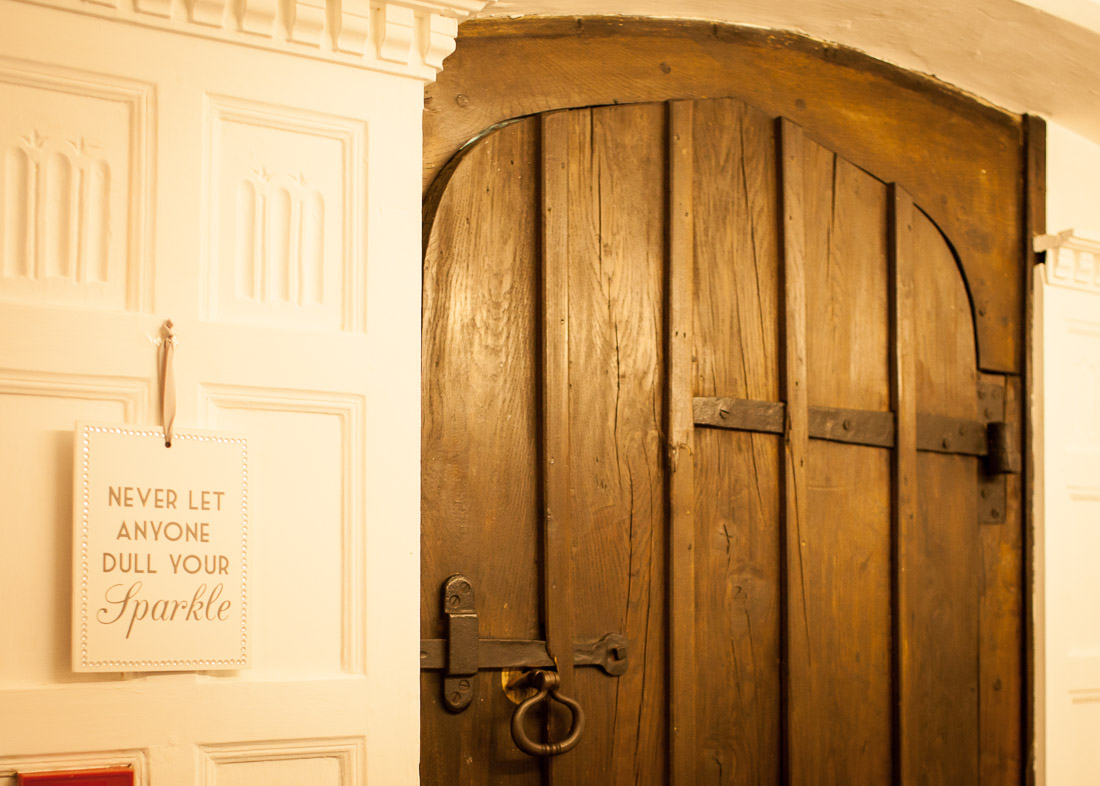
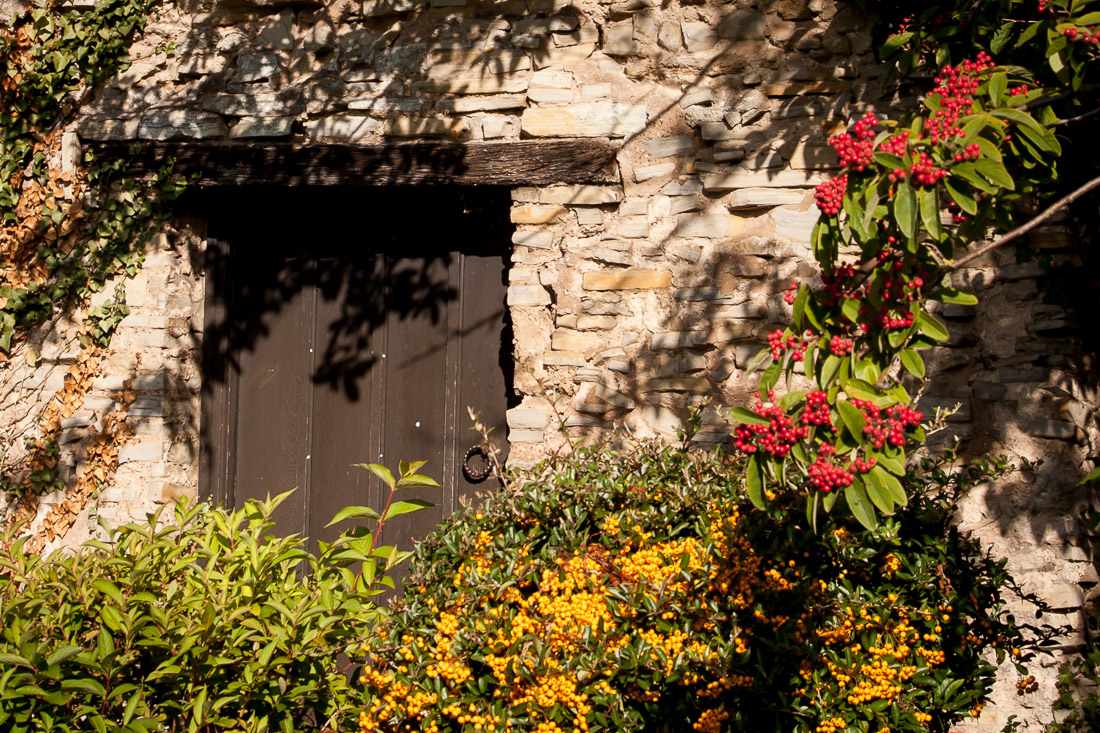
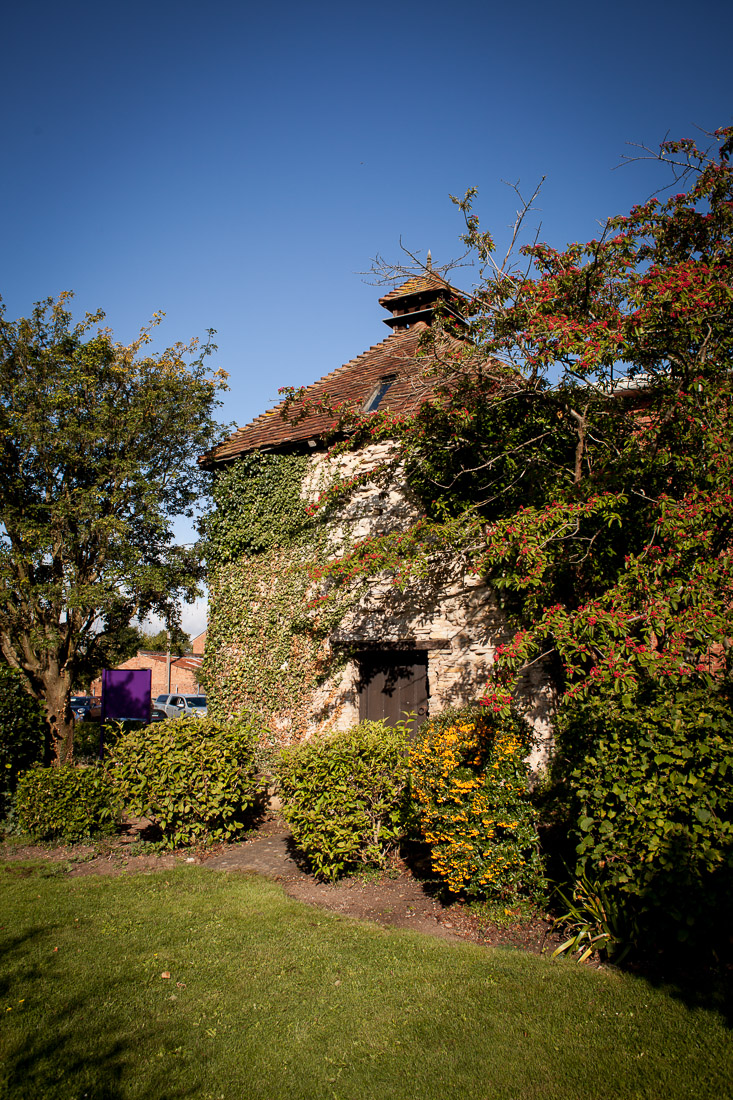
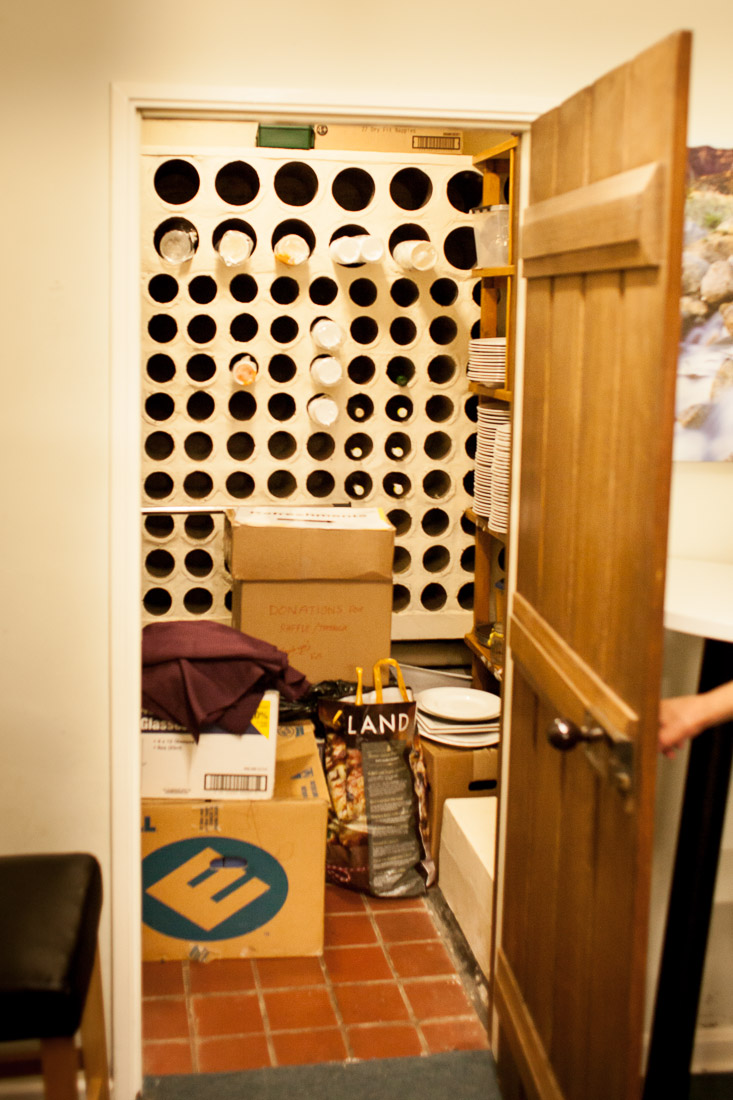
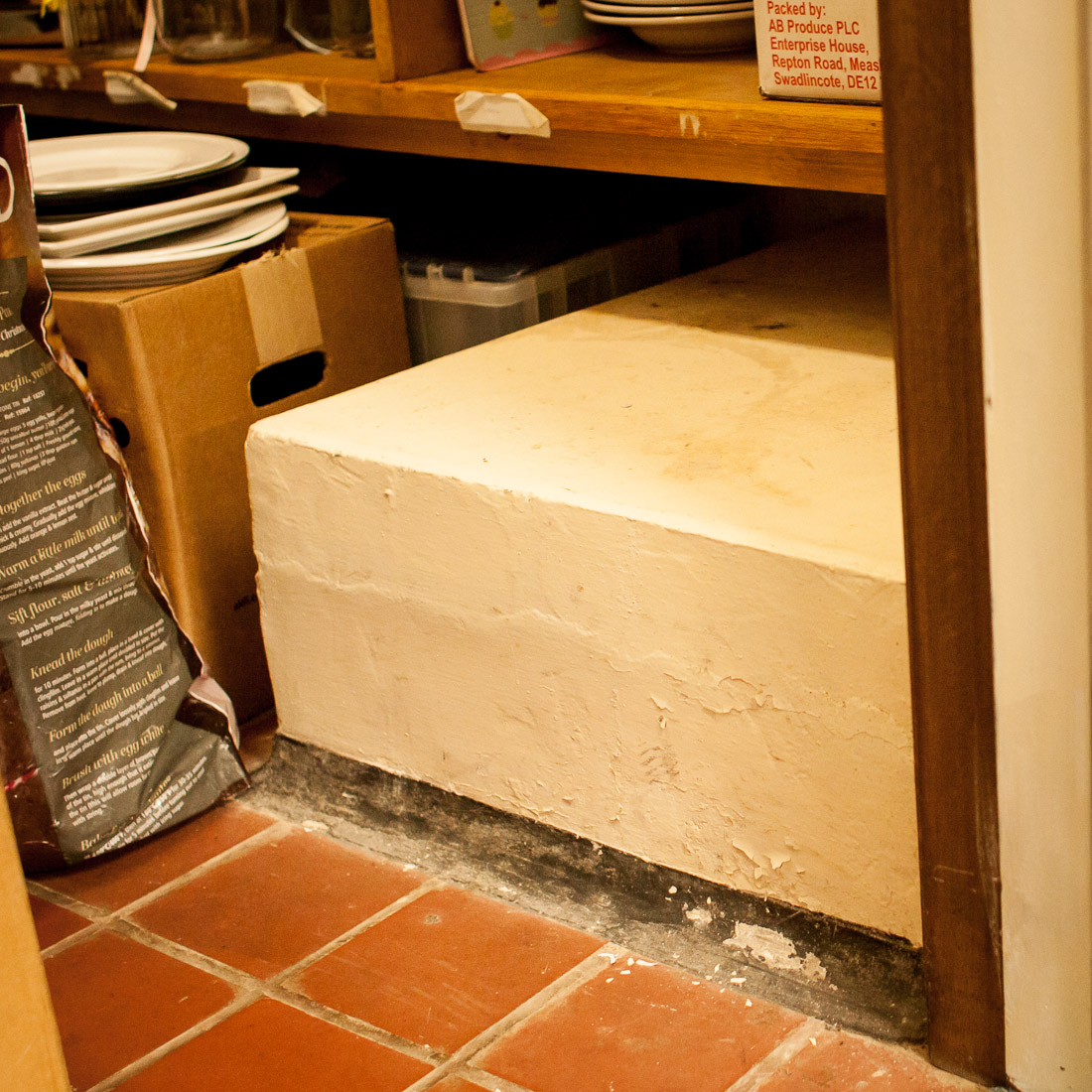
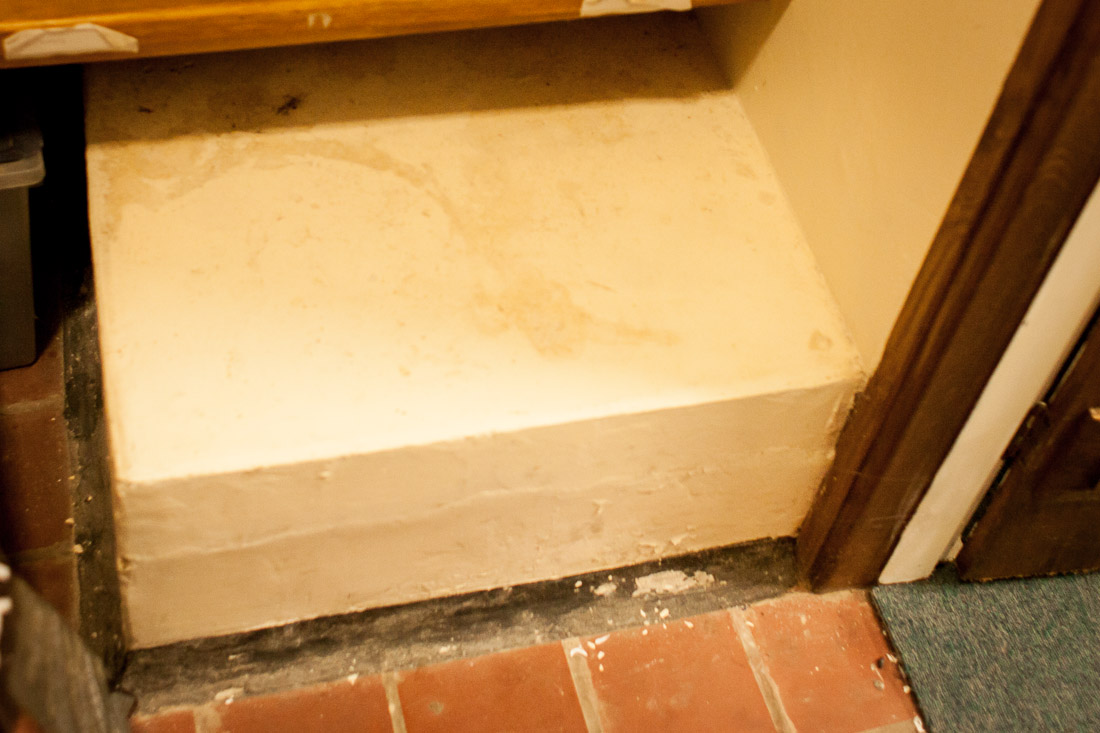
On the outer wall above the large doors at the back of the Manor there is a stone shield, reputed to represent the coat of arms of Offa, King of Mercia. However, it is probably taken from his seal because King Offa died four hundred years before heraldry was invented.
A large oak staircase leads from the flagstone floor of the hall to the first floor. Facing you halfway up the staircase are stained glass windows bearing the arms of the Harewell family (top left) the Hansell family (top right: owners of a large farm estate behind Anne Hathaway’s Cottage), Offa, King of Mercia (bottom left, and of Robert de Stratford, Bishop of Chichester (bottom right).
In the entrance hall inside the Manor over the brick fireplace is a fine white chimney-piece with side pilasters and rib work forming three shield-shaped panels. The outer panels enclose pendant branches of Tudor roses and the middle panel contains a shield bearing the arms of the Harewell family. The hall has a panelled plaster ceiling contemporary with the over-mantel.
The Shakespeare Room is steeped in history. Fine hammer beams support the roof, which has four twelve-feet bays open to the upper storey (there is no attic above this part). The room was used as a Chapel for many years after 1402 when John Harewell was granted a licence by John Clifford, Bishop of Worcester, for priests to celebrate religious services.
The original door to the Chapel is the strong oak nail-studded door currently to be found as the front door to the Manor.
It is reputed that William Shakespeare and Anne Hathaway were betrothed in this room. Originally known as the Great Hall, this room has stained glass coats of arms hanging in three panels in the large gable end window. These are of the Worcester diocese, Bishopton and the Hansell Estate, the latter shield bearing the words Temp. Hen (VIII) Rex. It is probable that the stained glass coats of arms were made and placed in position when the Manor House was owned and occupied by Lt. Col. Fordham Flower, who in the 1940s completed appropriate restoration of the Manor. Used as a Geography classroom, it is now a study room for the sixth form students.
The square dovecote lies to the north-east of the Manor House and is a Grade II listed building in its own right. Its date is unclear, but it is unlikely to be medieval. It is built of very crude rubblestone and there are curious robbed out indents near to the corners and in the centre of each elevation which have been interpreted as robbed out brick pilasters. The crudity of the masonry could suggest it was intended to be rendered. Considering the possibility that the building was once more decorative, it is possible that the present plain doorway with its timber lintel may be a later alteration. The tiled pyramid roof and the lover (or glover) at the apex seem to have been restored or renewed.
Whereas in the medieval period, the use of dovecotes was quite restricted – mainly to lords of the manor or preferred tenants – the rules were relaxed in the post-medieval period, especially after an Act of 1762 allowed any tenant farmer to build a dovecote providing he had his landlord’s permission. Ironically, by the end of the 19th century, the use of dovecotes declined, due in part to the enclosures and the perceived damage the pigeons did to crops – and to thatched roofs.
At the bottom of the back stairs, is the Butler's Pantry; a small room between the kitchen/scullery and what was formerly the Dining Room (now the Sixth Form Common Room). Staff working in the Manor used to prepare the trays/trolleys here before serving meals. This continued in the early years after the school's opening. Leading off the pantry is a door to the right, behind which is a small wine cellar. In the corner of the cellar, behind the door is a sealed escape hole leading to an underground passage, which comes out on Bordon Hill. Catholic priests under threat would likely have used this passage in times gone by.
the manor - use of the rooms and space
Guest Room 1
Located at the south-eastern end of the building. This room has a gable head of old, close-set studding and fine hammer beams supporting the roof. These are thought to be of the fifteenth century, about the time when the first Harewells lived here. In the 20th century, this room was a guest room. Elizabeth Flower recalls her aunts staying in this room and negotiating with the ghost to let them have a peaceful stay! Later used as an Economics and Business classroom, it is now the office of the Headteacher.
Master Bedroom
In the 20th century this room, which overlooks the beautious front garden of the Manor, was the main bedroom of Lt. Col. Fordham Flower and Lady Flower. It had an adjoining dressing room and bathroom. Today, this room is known as the Arden Room and is a study space for sixth form students. The adjoining dressing room is now the Headteacher's PA's office, and the bathroom space is now used as a storeroom.
Attic Space
Access to the attic is restricted today due to health and safety reasons. However, there is a small square wooden door in the roof space leading to a Priest's Hole, where Catholic priests are thought to have hidden when under threat.
Guest Room 2
Next door to the door which leads to the attic, is a former guest bedroom which overlooks the front garden. It has a brick fireplace similar to the one in the main Entrance Hall underneath. Earlier residents of the Manor have sensed the presence of a ghost of a lady in grey in this room. She is thought to walk around the Manor occasionally when it is quiet! Once used as the English Department's office, it is now the home of the Head of Sixth Form.
Great Hall / Chapel
This room is steeped in history. The room has fine hammer beams supporting the roof which has four twelve-feet bays open to the upper storey - there is no attic above this part. The room was used as a Chapel for many years after 1402 when John Harewell was granted a licence by John Clifford, Bishop of Worcester, for priests to celebrate religious services. The original door into the Chapel is the strong oak nail-studded door currently to be found as the front door to the Manor. It is reputed that William Shakespeare and Anne Hathaway were betrothed in this room. Originally known as the Great Hall, this room has stained glass coats of arms hanging in three panels in the large gable end window. These are of the Worcester diocese, Bishopton and the Hansell Estate, the latter shield bearing the words Temp. Hen (VIII) Rex. It is probable that the stained glass coats of arms were made and placed in the position when the Manor House was owned and occupied by Lt. Col. Fordham Flower who in the 1940s completed appropriate restorations to the Manor.
North Wing - Children's Quarters
This wing was built on to the Manor in the early 1900s by the trustees of the late Edgar Flower and his descendants. The small rooms off the corridor (and the attic rooms above) were probably used as bedrooms for children and their nanny, as evident from the safety bars on the windows and the wall tiles around the fireplaces and in the bathroom depicting children's story characters/animals. These rooms were last occupied by the four children of Lt. Col. Fordham Flower and Lady Flower. The rooms at the end of the corridor were used as the Day Nursery and the Night Nursery. A dumb-waiter hatch, which would have been used to send lunch and other meals to the Day Nursery from the kitchen beneath, is still in situ by the main doorway to the room. Some years ago during a Latin lesson, a black hooded ghostly figure peered down the fire escape hatch in the ceiling of what is now the Hathaway Room, and scared both the teacher and the pupils! Today, the Hathaway Room is a study space for sixth form students.
The Butler's Pantry
At the bottom of the back stairs, is the Butler's Pantry; a small room between the kitchen/scullery and what was formerly the Dining Room (now the Sixth Form Common Room). Staff working in the Manor used to prepare the trays/trolleys here before serving meals. This continued in the early years after the school's opening. Leading off the pantry is a door to the right, behind which is a small wine cellar. In the corner of the cellar, behind the door is a sealed escape hole leading to an underground passage, which comes out on Bordon Hill. Catholic priests under threat would likely have used this passage in times gone by.
The Dining Room
Used as the Dining Room by the Flower family, for Christmas family gatherings and other special occasions, this room has chamfered beams and is lined with wooden panelling dating from about 1640. The chimney stack has wide fireplaces on either side set in oak bressummers. Elizabeth Flower recalled an awareness of a male ghost who used to switch lights off and on, move objects about and leave a chill in the air after passing through doorways. Today, this is the Sixth Form Common Room.
Domestic Housing
During the time of the Flowers' residency certainly, the small cottages were lived in by the domestic staff and the children's nanny. Today, these are the Art studios.
The Dairy
To the right of the garages, these rooms have more recently been used as Headteacher Ms Barnett and her PA's offices, and is home today to the Marketing department, a meeting room facility and study space for the sixth form students. Originally, this space housed the dairy.
Exterior Features of the Manor House
The front side: The oldest part of Shottery Manor is a rectangular building of approximately twenty-five metres by eight metres facing west. The lower floor is of local Arden sandstone ashlar, and has chamfered plinth stepped up at the north end. It is possible that this part dates from the fourteenth century and was a tithe barn or similar building in the period when the Manor was held by Evesham Abbey, but there are no windows or doorways of this period. The roof, however, was more suitable for a Great Hall than a tithe barn. By the sixteenth century, the central chimney stack had been built and the upper floor inserted.
The ground and first floor windows date from a period not earlier than 1660. They occur in two equally spaced ranges of ten square-headed, rather tall and narrow openings with lintels and key blocks, all fitted with wooden frames with transoms and middle mullions. Some windows have been removed and blocked up and a couple on the south end, on the ground floor, have been replaced by bay windows (one in the Entrance Hall and one in Room D, formerly the Drawing Room). The Flower family used to use the wrought iron central gates for the main (pedestrian) entrance into the property from Shottery Road. Cars came in by the side entrance opposite Quinneys Road and the garage was next to the present Marketing Office and Meeting Room.
Balcony and Staircase
The brickwork of the first floor was made from local iron-rich clay and the oak balcony and staircase are thought to have been originally put in place in the early twentieth century. The balcony and the small lawn in front of it have been used by the school students as an outdoor setting for some Shakespeare plays such as Romeo and Juliet and A Midsummer Night's Dream. It is said that the balcony on the Manor inspired Shakespeare to write his famous Romeo and Juliet scene.
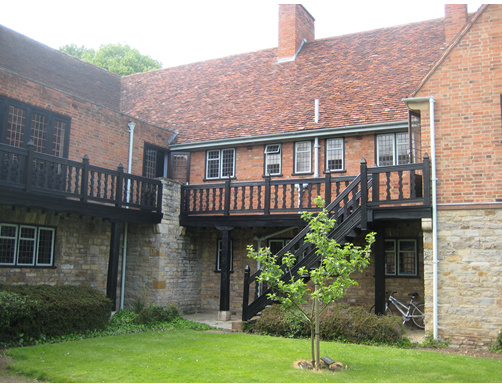
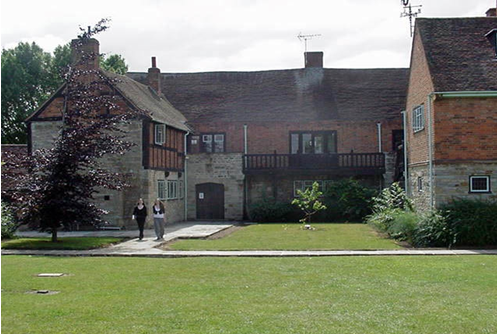
HEADTEACHERS OF SGGS
| September 2016 - Present | Mrs Cornell |
| September 2005 - August 2016 | Ms Barnett |
| January 1991 - August 2005 | Mr Stanbridge |
| September 1985 - December 1990 | Miss Abrams |
| September 1969 - August 1985 | Miss Tudor |
| September 1958 - July 1969 | Miss Williams |



